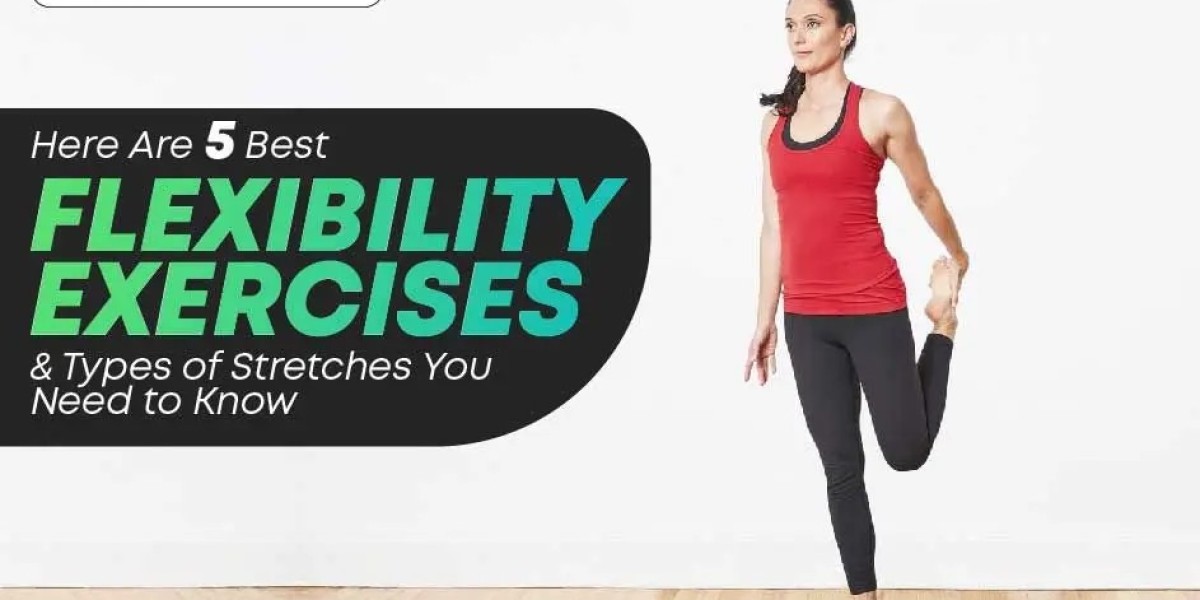Flexibility exercises are crucial for enhancing overall fitness, boosting performance, and maintaining a supple, agile body. These exercises, often referred to as stretching, are vital for improving your range of motion and ensuring a more comfortable and injury-free daily life. Whether you're a seasoned athlete or just beginning your fitness journey, integrating flexibility exercises into your routine can provide numerous benefits. Here’s an overview of the best types of flexibility exercises and five essential stretches to practice.
Understanding Flexibility Exercise
Flexibility exercises fall into one of four categories: strength, balance, endurance, and flexibility. These exercises focus on stretching muscles to enhance your body’s range of motion. Although they don't directly improve strength or endurance, they play a key role in making other physical activities easier and reducing the risk of injury. Incorporating flexibility exercises into your routine helps in achieving a well-rounded fitness regimen.
Best Types of Flexibility Exercises
1. Static Stretching
Description
Static stretching involves extending a muscle to its full length and holding the stretch for 10 to 60 seconds. This technique can be performed actively (by the individual) or passively (with assistance) and is most effective when done after a warm-up or workout.
Benefits
Enhances muscle flexibility and range of motion, promotes relaxation, and aids in injury prevention.
2. Dynamic Stretching
Description
Dynamic stretching uses controlled, rhythmic movements to increase joint range of motion. It’s typically performed as part of a warm-up routine before physical activity or sports.
Benefits
Prepares muscles and joints for exercise, improves performance, and helps with sport-specific movements.
3. Self-Myofascial Release (SMR)
Description
SMR involves using a foam roller to apply pressure to specific muscles, which helps release tension and improve blood flow. It’s beneficial both before and after workouts.
Benefits
Enhances circulation, aids in muscle recovery, and reduces soreness.
Top 5 Flexibility Exercises to Try
1. Hamstring Stretch
How to Perform
Sit on the floor with one leg extended straight and the other leg bent, with the foot touching the inner thigh of the extended leg. Reach forward towards the extended leg and hold the stretch.
Benefits
Improves flexibility in the hamstrings and lower back, which can alleviate lower back pain and improve overall leg flexibility.
2. Cat-Cow Stretch
How to Perform
Begin on your hands and knees. Arch your back towards the ceiling (Cat pose), then dip it towards the floor (Cow pose) while lifting your head and tailbone.
Benefits
Increases spinal flexibility and relieves tension in the back and neck.
3. Child’s Pose
How to Perform
Kneel on the floor, sit back on your heels, and extend your arms forward on the ground, lowering your torso between your thighs.
Benefits
Stretches the lower back, hips, and thighs, and promotes relaxation and stress relief.
4. Pigeon Pose
How to Perform
From a plank position, bring one knee forward and place it behind your wrist. Extend the opposite leg straight back and lower your torso towards the ground.
Benefits
Opens up the hips and stretches the glutes and lower back, improving hip flexibility and reducing tightness.
5. Cobra Stretch
How to Perform
Lie face down with your hands placed under your shoulders. Press your chest upwards while keeping your hips on the ground.
Benefits
Stretches the abdominal muscles and improves spinal flexibility, which can help with posture and alleviate lower back pain.
FAQs
1. What are some beginner-friendly flexibility exercises?
Hamstring Stretch
Cat-Cow Stretch
Child’s Pose
2. Can you recommend a flexibility routine for beginners?
Forward Fold
Butterfly Stretch
Seated Spinal Twist
3. What flexibility exercises are best for increasing range of motion?
Downward Dog
Pigeon Pose
Cobra Stretch
4. What is a good full-body flexibility routine for home?
Standing Side Stretch
Quadriceps Stretch
Shoulder Stretch
5. What flexibility exercises are ideal for beginners?
Leg Swings
Chest Opener Stretch
Hip Flexor Stretch
Conclusion
Incorporating flexibility exercises into your fitness routine is essential for improving your movement range, reducing muscle tension, and making workouts safer and more effective. Combining these exercises with strength and cardio training will help you achieve a well-balanced fitness regimen. With a variety of stretching techniques available, you can keep your routine engaging and effective.
About ToneOp Fit
ToneOp Fit is a comprehensive health platform offering personalized health plans with dedicated coaching. With options for weight management, medical conditions, detox, and yoga, ToneOp provides customized fitness solutions, premium health trackers, and a wealth of recipes and health content. Transform your wellness journey with ToneOp today!
Visit Our Website










